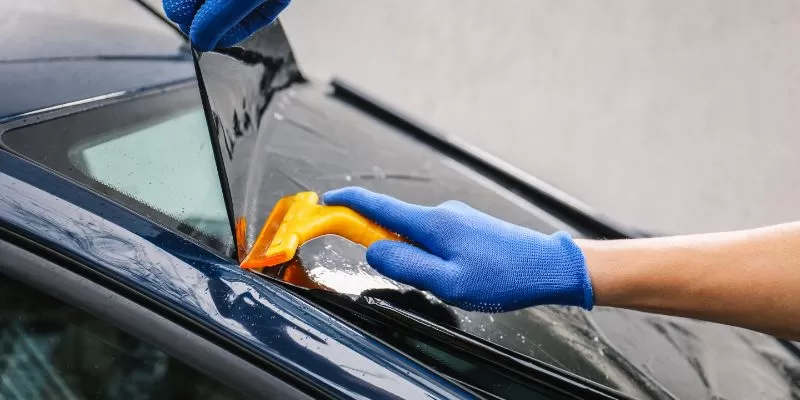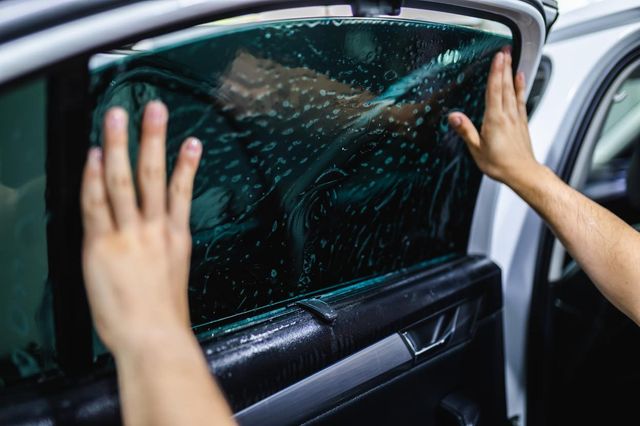Home Window Tinting Laws and Guidelines: What You Need to Know Prior To Tinting Your Auto
Prior to proceeding with window tinting for your automobile, it is important to acquaint yourself with the diverse legislations and standards that control this method throughout different states. These guidelines determine the acceptable levels of color darkness, frequently gauged by noticeable light transmission (VLT) percents, and include certain stipulations for front windscreens targeted at making sure road security. In addition, particular jurisdictions might offer clinical exceptions for individuals with certifying conditions. Understanding these complexities can save you from potential legal implications, but what are the particular regulations in your state?
Summary of Window Tinting Rules
Window tinting laws are regularly subject to variation throughout various jurisdictions, reflecting regional policies and safety factors to consider. These regulations determine the allowable levels of tint darkness and reflectiveness on vehicle windows, ensuring that drivers keep appropriate exposure while likewise shielding versus dangerous UV rays and heat.
The majority of policies classify window tinting based on the Visible Light Transmission (VLT) portion, which suggests the amount of light that can travel through the window. Generally, lower VLT percentages indicate darker colors. Regulations often set apart between the front, side, and rear windows, with more stringent limitations related to the front windscreen to boost safety for both the motorist and other road users.
Additionally, some territories enforce limitations on the reflectivity of the color, stopping too much glow that can impair visibility. Exemptions to these regulations might exist for individuals with specific clinical conditions calling for added sunlight defense. Conformity with window tinting policies is essential, as violations can result in fines, necessary removal of the tint, and prospective increases in insurance coverage costs. As a result, it is vital for automobile proprietors to familiarize themselves with neighborhood regulations before waging home window tinting installments.
State-by-State Tint Rules
Recognizing the certain window tinting guidelines in each state is crucial for automobile owners seeking to abide by the law. Each state in the U.S. has developed its own set of guidelines governing window tinting, which can vary considerably. These regulations typically dictate the allowable degrees of color darkness, the sorts of home windows that can be tinted, and any medical exceptions that may use.
As an example, states like The golden state have rigid limitations on color darkness for front home windows, while others, such as New Mexico, may permit darker tints. Furthermore, specific states mandate particular presence portions for different home windows, including the windshield, front side windows, and back home windows. It is critical for cars and truck proprietors to acquaint themselves with their state's legislations to avoid prospective fines or fines.
Additionally, some states might require an accreditation sticker label to be put on tinted home windows, suggesting compliance with state regulations. Failing to abide by these policies not just risks lawful consequences yet can likewise affect safety and security and exposure while driving. As a result, lorry proprietors need to perform thorough research or consult regional authorities to guarantee full understanding and compliance with state-by-state color guidelines.
Allowed Color Degrees and Types
Many vehicle proprietors may be shocked to learn that permitted color levels and types differ extensively throughout various states. Each state has established its very own regulations relating to the permitted darkness and reflectivity of home window tint, typically determined by Visible Light Transmission (VLT) portions. VLT describes the amount of light that can pass via the colored home windows; hence, a reduced percentage suggests a darker color.

Furthermore, the kinds of color materials permitted can differ, with some states forbiding mirror-like or metal coatings. It is important for vehicle proprietors to familiarize themselves with their state's specific legislations to make sure conformity. Non-compliance can cause fines, obligatory elimination of the color, or other legal effects, making it vital to understand these policies before waging installation.
Medical Exemptions for Tinting
While not all states offer allowances for medical exemptions concerning home window tinting, those that do identify the necessity for specific individuals to improve exposure and comfort as a result of clinical conditions. Numerous clinical problems, such as lupus, skin cancer, and certain eye disorders, can provide individuals particularly conscious sunshine. These individuals may call for darker tints to shield themselves from harmful UV rays and glare.

It is crucial to note that despite having a medical exemption, there may still be constraints on the level of color permitted. Conformity with state laws ensures that individuals are both secured and within lawful limitations. Those considering medical exemptions ought to call their neighborhood Department of Motor Vehicles or equal authority to recognize the treatments and demands needed to get an exception effectively.
Fines for Non-Compliance
Stopping working to adhere to window tinting laws can bring about substantial fines, which vary by state. Police are empowered to issue citations for cars directory that do not stick to the specified tinting guidelines. These fines generally include penalties, which can vary from small total up to a number of hundred bucks, depending upon the seriousness of the violation and the state concerned.
In some jurisdictions, repeated offenses may lead to escalating penalties or added fines, such as necessary court looks. In addition, non-compliance may necessitate the removal of unlawful tinting, commonly at the proprietor's expense. In severe cases, habitual culprits might deal with suspension of their lorry registration until conformity is accomplished.
In addition, insurance coverage implications may arise from obtaining numerous citations for home window tint violations. Insurance providers may view such violations as an indication of riskier actions, possibly bring about enhanced costs or problem in coverage.
To avoid these fines, it is vital for lorry proprietors to acquaint themselves with their local window tinting legislations and make sure that their vehicle complies (Window Tinting). This proactive technique not only prevents legal implications however likewise promotes roadway security
Final Thought

A lot of laws identify window tinting based on the Visible Light Transmission (VLT) percentage, which shows the quantity of light that can pass through the window. Compliance with window visit this site tinting guidelines is vital, as offenses can result in fines, compulsory elimination of the color, and potential boosts in insurance policy costs.Recognizing the particular window tinting regulations in each state is vital for car proprietors seeking to abide with the regulation. These laws frequently determine the allowable levels of color darkness, the types of home windows that can be tinted, and any kind of clinical exceptions that may use.
For instance, states like California have rigid limitations on color darkness for front windows, while others, such as New Mexico, might enable darker colors.
Comments on “Automobile Window Tinting: An Overview to Choosing the Perfect Color”